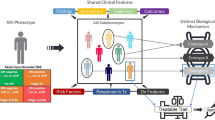Abstract
Background
Biomarkers for the early prediction of the severity of acute pancreatitis (AP) are urgently needed for clinical management of the disease. Angiopoietin-2 (Ang-2), one of the autocrine peptides that reduce endothelial permeability, has been found to be associated with various diseases, including inflammatory disorders.
Aims
This study aimed to determine whether serum Ang-2 could serve as a noninvasive biomarker for the early prediction of persistent organ failure (POF) in acute pancreatitis.
Methods
A total of 120 AP patients were prospectively enrolled at Jinling Hospital. Serum samples were collected on admission. Clinical and laboratory data were recorded. Ang-2 levels were measured by enzyme-linked immunosorbent assay.
Results
A total of 37 patients developed POF and were classified as having severe AP (SAP). Ang-2 was significantly higher on admission in patients who developed POF than in those who did not (p < 0.001 for all). Furthermore, receiver operating characteristic (ROC) curve analysis revealed that Ang-2 could distinguish patients who developed POF from mild AP (MAP, area under ROC curve [AUC] = 0.88, 95 % CI 0.78–0.94) and moderately severe AP patients (MSAP, AUC = 0.74, 95 % CI 0.63–0.83). In addition, multivariate logistic regression showed that increased Ang-2 was an independent predictor of developing POF between subgroups with MSAP and SAP (OR 7.2, 95 % CI 2.7–19.4) and among all AP patients (OR 12.1, 95 % CI 4.8–30.3).
Conclusions
Elevated serum Ang-2 levels on admission may be a promising biomarker for the prediction of POF in AP.



Similar content being viewed by others
References
Yadav D, Lowenfels AB. The epidemiology of pancreatitis and pancreatic cancer. Gastroenterology. 2013;144:1252–1261.
Whitcomb DC, Muddana V, Langmead CJ, et al. Angiopoietin-2, a regulator of vascular permeability in inflammation, is associated with persistent organ failure in patients with acute pancreatitis from the United States and Germany. Am J Gastroenterol. 2010;105:2287–2292.
Orfanos SE, Kotanidou A, Glynos C, et al. Angiopoietin-2 is increased in severe sepsis: correlation with inflammatory mediators. Crit Care Med. 2007;35:199–206.
Fiedler U, Augustin HG. Angiopoietins: a link between angiogenesis and inflammation. Trends Immunol. 2006;27:552–558.
Lee KW, Lip GY, Blann AD. Plasma angiopoietin-1, angiopoietin-2, angiopoietin receptor tie-2, and vascular endothelial growth factor levels in acute coronary syndromes. Circulation. 2004;110:2355–2360.
van der Heijden M, van Nieuw Amerongen GP, Koolwijk P, van Hinsbergh VW, Groeneveld AB. Angiopoietin-2, permeability oedema, occurrence and severity of ALI/ARDS in septic and non-septic critically ill patients. Thorax. 2008;63:903–909.
Kumpers P, van Meurs M, David S, et al. Time course of angiopoietin-2 release during experimental human endotoxemia and sepsis. Crit Care. 2009;13:R64.
Raraty MG, Connor S, Criddle DN, Sutton R, Neoptolemos JP. Acute pancreatitis and organ failure: pathophysiology, natural history, and management strategies. Curr Gastroenterol Rep. 2004;6:99–103.
Espinosa L, Linares PM, Bejerano A, et al. Soluble angiogenic factors in patients with acute pancreatitis. J Clin Gastroenterol. 2011;45:630–637.
Watanabe T, Tsuji Y, Kodama Y, Isoda H, Yamamoto H, Chiba T. Relationship between serum angiopoietin-2 level and perfusion CT parameters in severe acute pancreatitis. Am J Gastroenterol. 2011;106:1859–1861.
Balta AZ, Ozdemir Y, Sucullu I, Akin ML, Demirbas S. Early detection of potentially severe acute pancreatitis. J Am Coll Surgeons. 2014;218:1074.
Banks PA, Bollen TL, Dervenis C, et al. Classification of acute pancreatitis–2012: revision of the Atlanta classification and definitions by international consensus. Gut. 2013;62:102–111.
Knaus WA, Draper EA, Wagner DP, Zimmerman JE. APACHE II: a severity of disease classification system. Crit Care Med. 1985;13:818–829.
Ranson J. Prognostic signs and the role of operative management in acute pancreatitis. Surg Gynecol Obstet. 1974;139:69–81.
Lankisch PG, Apte M, Banks PA. Acute pancreatitis. Lancet. 2015;32:81–92.
Cardoso FS, Ricardo LB, Oliveira AM, et al. C-reactive protein prognostic accuracy in acute pancreatitis: timing of measurement and cutoff points. Eur J Gastroen Hepat. 2013;25:784–789.
Messmann H, Vogt W, Falk W, et al. Interleukins and their antagonists but not TNF and its receptors are released in post-ERP pancreatitis. Eur J Gastroen Hepat. 1998;10:611–618.
Fiedler U, Scharpfenecker M, Koidl S, et al. The Tie-2 ligand angiopoietin-2 is stored in and rapidly released upon stimulation from endothelial cell Weibel–Palade bodies. Blood. 2004;103:4150–4156.
Yancopoulos GD, Davis S, Gale NW, Rudge JS, Wiegand SJ, Holash J. Vascular-specific growth factors and blood vessel formation. Nature. 2000;407:242–248.
Maisonpierre PC, Suri C, Jones PF, et al. Angiopoietin-2, a natural antagonist for Tie2 that disrupts in vivo angiogenesis. Science. 1997;277:55–60.
Siner JM, Bhandari V, Engle KM, Elias JA, Siegel MD. Elevated serum angiopoietin 2 levels are associated with increased mortality in sepsis. Shock. 2009;31:348–353.
Buddingh KT, Koudstaal LG, van Santvoort HC, et al. Early angiopoietin-2 levels after onset predict the advent of severe pancreatitis, multiple organ failure, and infectious complications in patients with acute pancreatitis. J Am Coll Surgeons. 2014;218:26–32.
Peng YS, Chen YC, Tian YC, et al. Serum levels of apolipoprotein A-I and high-density lipoprotein can predict organ failure in acute pancreatitis. Crit Care. 2015;19:88.
Muddana V, Whitcomb DC, Khalid A, Slivka A, Papachristou GI. Elevated serum creatinine as a marker of pancreatic necrosis in acute pancreatitis. Am J Gastroenterol. 2009;104:164–170.
Acknowledgments
We thank Chunni Zhang and Cheng Wang for the serum sample collection. This research was supported by the National Natural Science Foundation of China (Grant No. 81270453).
Author information
Authors and Affiliations
Corresponding author
Ethics declarations
Conflict of interest
The authors declare no competing financial interests.
Rights and permissions
About this article
Cite this article
Zhang, YP., Liu, C., Ye, L. et al. Early Prediction of Persistent Organ Failure by Serum Angiopoietin-2 in Patients with Acute Pancreatitis. Dig Dis Sci 61, 3584–3591 (2016). https://doi.org/10.1007/s10620-016-4323-y
Received:
Accepted:
Published:
Issue Date:
DOI: https://doi.org/10.1007/s10620-016-4323-y




